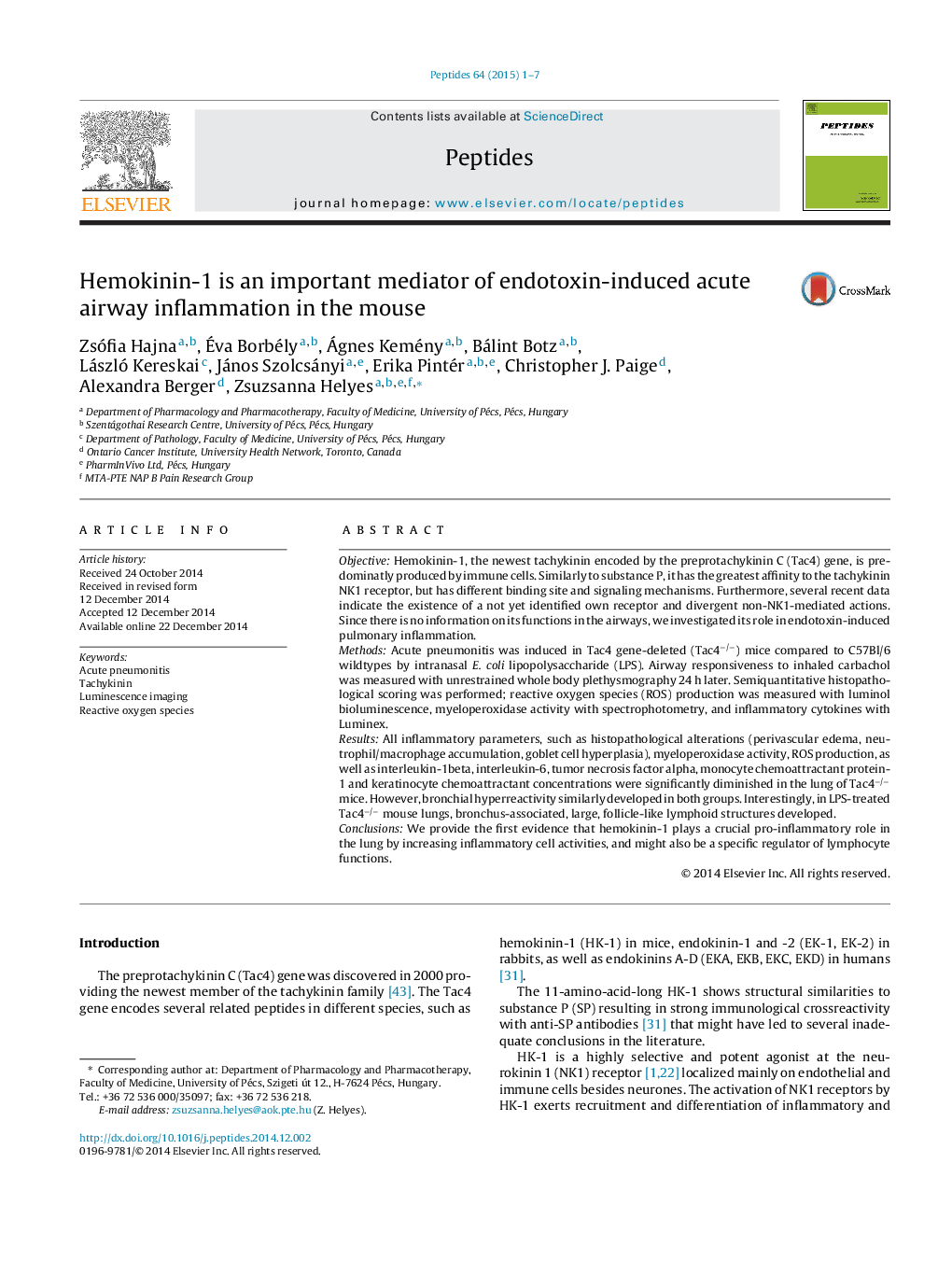| Article ID | Journal | Published Year | Pages | File Type |
|---|---|---|---|---|
| 2005962 | Peptides | 2015 | 7 Pages |
•Hemokinin-1 mediates inflammation in LPS-induced acute mouse pneumonitis.•Hemokinin-1 is not involved in LPS-induced bronchial hyperreactivity.•Inflammatory action of hemokinin-1 is not mediated by the tachykinin NK1 receptor.•Hemokinin-1 is likely to induce pneumonitis via a novel target/mechanism.
ObjectiveHemokinin-1, the newest tachykinin encoded by the preprotachykinin C (Tac4) gene, is predominatly produced by immune cells. Similarly to substance P, it has the greatest affinity to the tachykinin NK1 receptor, but has different binding site and signaling mechanisms. Furthermore, several recent data indicate the existence of a not yet identified own receptor and divergent non-NK1-mediated actions. Since there is no information on its functions in the airways, we investigated its role in endotoxin-induced pulmonary inflammation.MethodsAcute pneumonitis was induced in Tac4 gene-deleted (Tac4−/−) mice compared to C57Bl/6 wildtypes by intranasal E. coli lipopolysaccharide (LPS). Airway responsiveness to inhaled carbachol was measured with unrestrained whole body plethysmography 24 h later. Semiquantitative histopathological scoring was performed; reactive oxygen species (ROS) production was measured with luminol bioluminescence, myeloperoxidase activity with spectrophotometry, and inflammatory cytokines with Luminex.ResultsAll inflammatory parameters, such as histopathological alterations (perivascular edema, neutrophil/macrophage accumulation, goblet cell hyperplasia), myeloperoxidase activity, ROS production, as well as interleukin-1beta, interleukin-6, tumor necrosis factor alpha, monocyte chemoattractant protein-1 and keratinocyte chemoattractant concentrations were significantly diminished in the lung of Tac4−/− mice. However, bronchial hyperreactivity similarly developed in both groups. Interestingly, in LPS-treated Tac4−/− mouse lungs, bronchus-associated, large, follicle-like lymphoid structures developed.ConclusionsWe provide the first evidence that hemokinin-1 plays a crucial pro-inflammatory role in the lung by increasing inflammatory cell activities, and might also be a specific regulator of lymphocyte functions.
